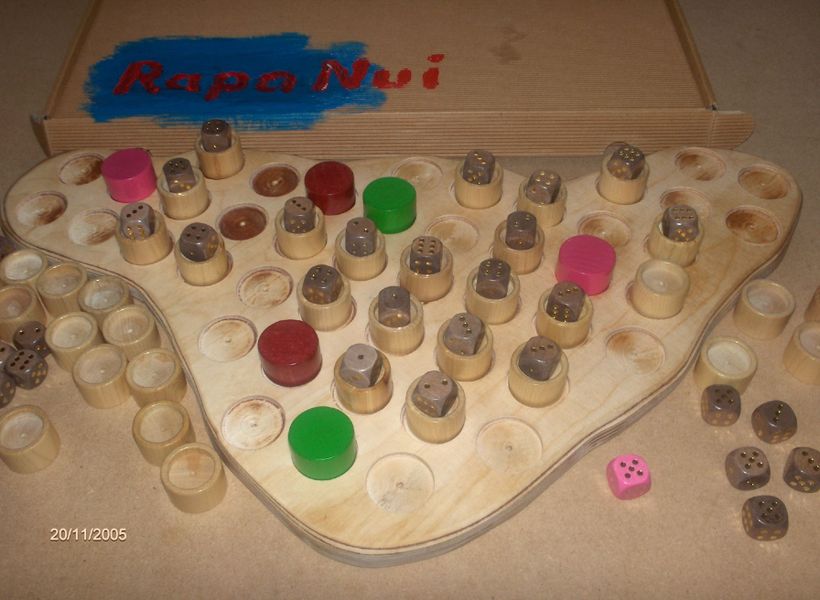Rapa Nui (2005) Board Game
Rapa Nui is an abstract strategy board game that was released in in 2005. Designed by Reinhold Wittig, the game is inspired by the ancient Polynesian culture of Easter Island, also known as Rapa Nui. The game features beautiful artwork by 3-Hirn-Verlag, Edition Perlhuhn, and Giseh Verlag.
Game Components of Rapa Nui
How To Setup Rapa Nui
To set up the game, each player is given four starting villagers and a sorcerer. The board is prepared with the respective number of players in mind, using either the two-player or three-to-four-player side. Each player receives four improvement tiles, two of which can be used to add additional meeples or other bonuses. The resources and offering tiles are placed within reach of all players.
Gameplay Mechanics and Game Objective
Player Experience
**Rapa Nui** offers a engaging and strategic experience, particularly with four players. The game demands careful planning and resource management, as players balance between sculpting moai, expanding on the board, and taking offering tiles for points. The game is known for its tight and agonizing choices, making players feel clever as they navigate through the game. It often goes down to the final turns, keeping players unsure of who will win.
Pros
Cons
Personal Thoughts on Rapa Nui
**Rapa Nui** is ideal for players who enjoy strategic games with deep resource management and worker placement mechanics. It’s a great choice for those looking for a game that combines cooperation and competition, especially those interested in unique cultural themes. However, it may not be the best fit for new board game enthusiasts due to its complexity and procedural elements. Overall, it’s a fun and clever game that challenges players to make tight and agonizing decisions, making it a great addition to any board game collection.
We are supported by our audience. When you purchase through links on our site, we may earn an affiliate commission, at no extra cost for you. Learn more.

